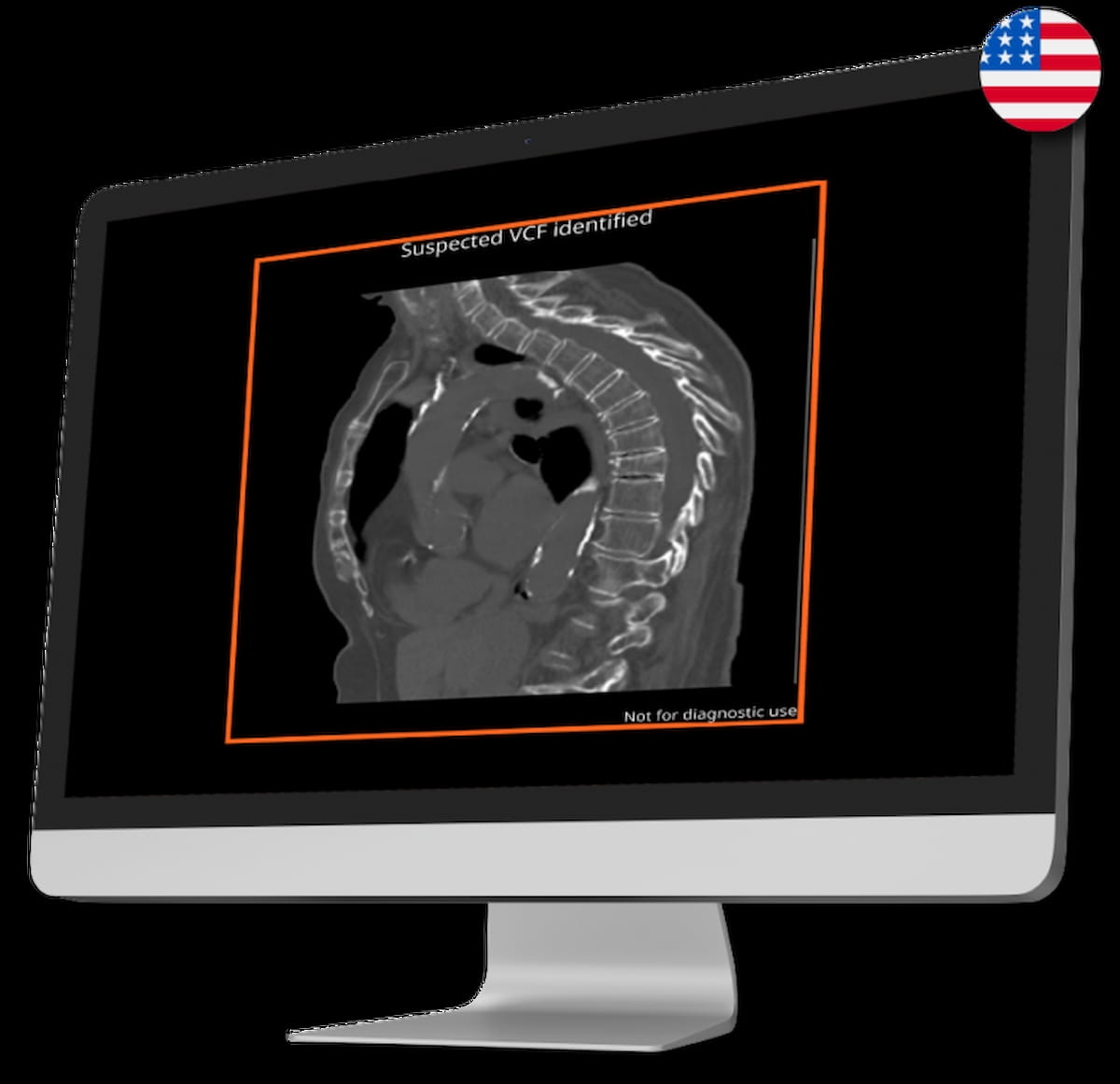FDA Clears CT-Based AI Tool for Detecting Vertebral Compression Fractures
The AI-enabled CINA-VCF algorithm can reportedly detect vertebral compression fractures within seconds after assessment of chest or abdominal CT scans.
A newly FDA-cleared artificial intelligence (AI) algorithm may bolster the early diagnosis of osteoporosis-related vertebral compression fractures that reportedly affect 750,000 patients annually in the United States and are commonly undetected.
By assessing chest or abdominal computed tomography (CT) scans, the CINA-VCF algorithm can diagnose and facilitate timely triage of vertebral compression fractures, according to Avicenna.AI, the developer of CINA-VCF.
Reportedly validated on 474 CT scans obtained from 38 scanner models and four different scanner manufacturers, the CINA-VCF algorithm for diagnosing vertebral compression fractures, based off of chest or abdominal CT scans, has garnered 510(k) clearance from the FDA. (Images courtesy of Avicenna.AI.)

Noting that CINA-VCF was validated on 474 CT scans obtained from 38 scanner models and four different scanner manufacturers, Avicenna.AI said the CINA-VCF tool offers strong sensitivity and detects vertebral compression fractures within seconds.
"Osteoporosis is a global burden affecting millions, especially postmenopausal women, and often goes unnoticed until symptoms like pain and loss of mobility appear," said Cyril Di Grandi, the co-founder and CEO of Avicenna.AI. "By detecting vertebral compression fractures early, we aim to help patients maintain better mobility and independence, enhance the well-being of those at risk, and reduce the burden on health-care systems worldwide.”
Newsletter
Stay at the forefront of radiology with the Diagnostic Imaging newsletter, delivering the latest news, clinical insights, and imaging advancements for today’s radiologists.
Stroke MRI Study Assesses Impact of Motion Artifacts Upon AI and Radiologist Lesion Detection
July 16th 2025Noting a 7.4 percent incidence of motion artifacts on brain MRI scans for suspected stroke patients, the authors of a new study found that motion artifacts can reduce radiologist and AI accuracy for detecting hemorrhagic lesions.